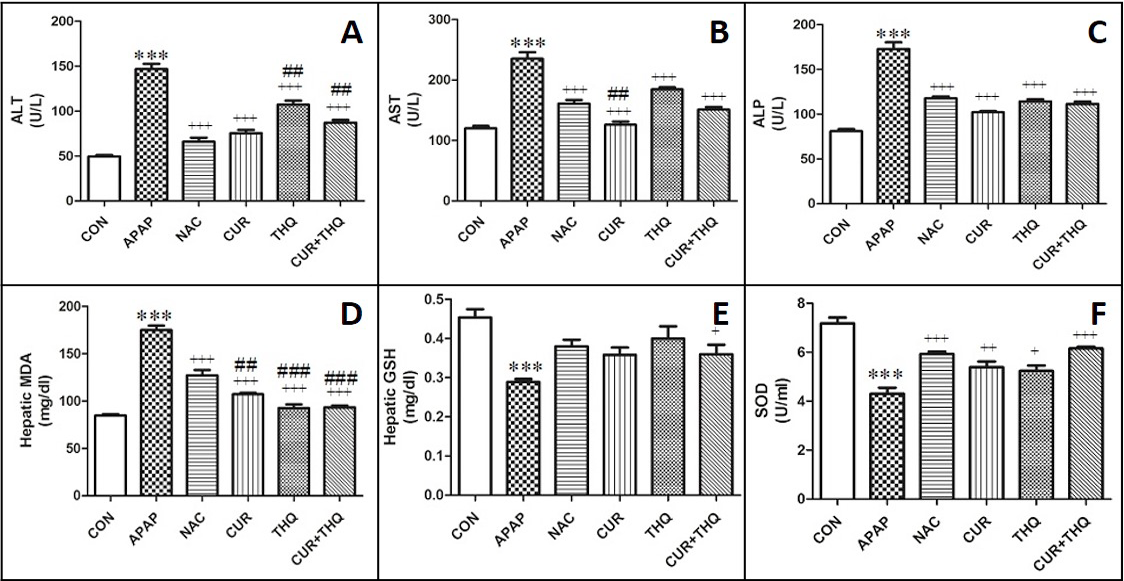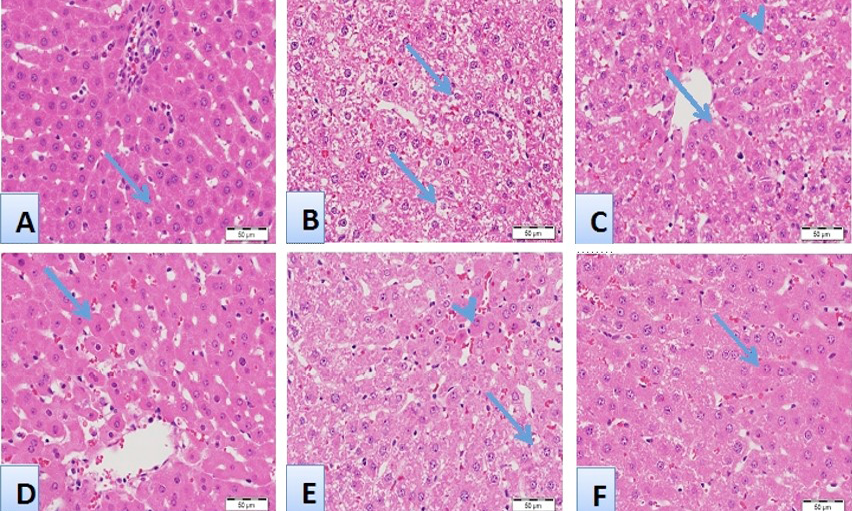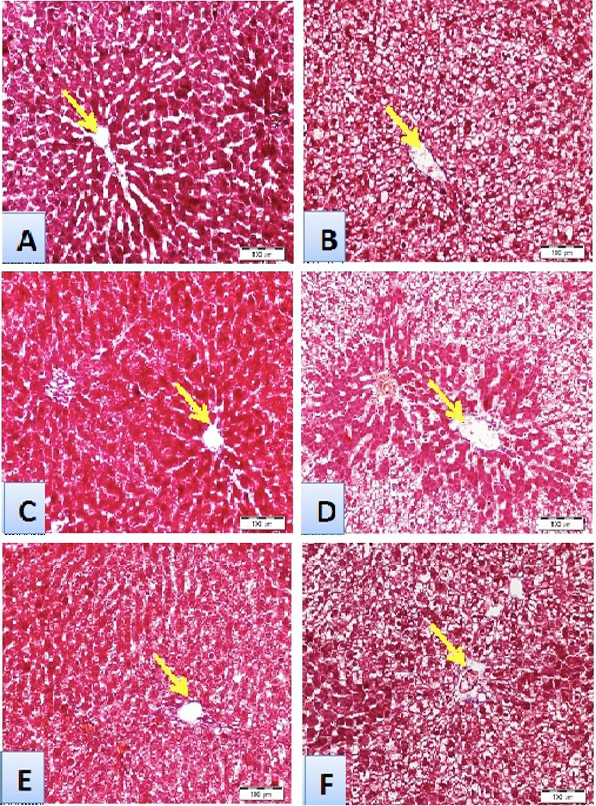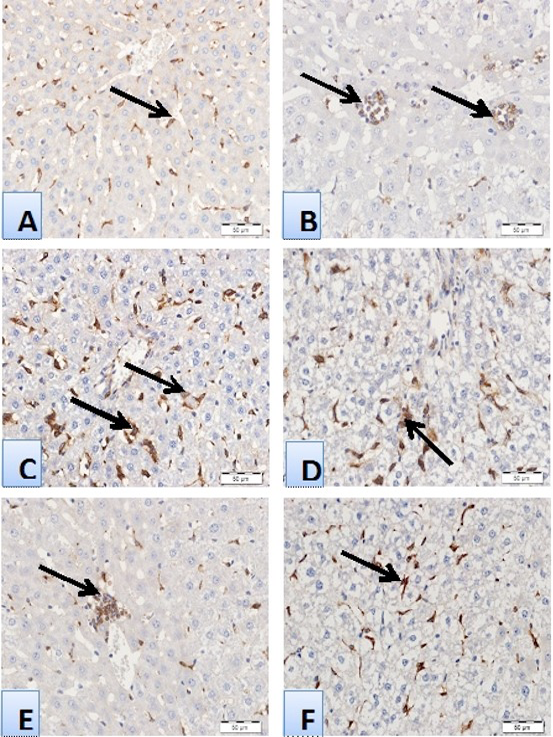Bax and CD68 Expression in Response to Liver Injury Induced by Acetaminophen: The Hepatoprotective Role of Thymoquinone and Curcumin
Bax and CD68 Expression in Response to Liver Injury Induced by Acetaminophen: The Hepatoprotective Role of Thymoquinone and Curcumin
Laila M. Fadda1, Nouf M. Al-Rasheed1, Iman H. Hasan1, Hanaa M. Ali2,3*, Nawal M. Al-Rasheed1,4, Musaed Al-Fayez5, Aly M. Ahmed5, Nada Almutlaq1, Nehal Qasem1 and Reem Khalaf1
Serum level of alanine aminotransferase (ALT), aspartate aminotransferase (AST) and alkaline phosphatase (ALP) and hepatic malondialdehyde (MDA), reduced glutathione (GSH) and superoxide (SOD) in control (CON) and all experimental groups
Histological investigation ofrat’s lever stained at H&E.
Histological examination of rat’s liver stained by Masson’s Trichrome.
Histological investigation of rat’s liver stained by Immuno-stain with the anti CD68 antibody.
Histological investigation of rat’s liver stained by Immuno-stain with the anti-Bax antibody.














